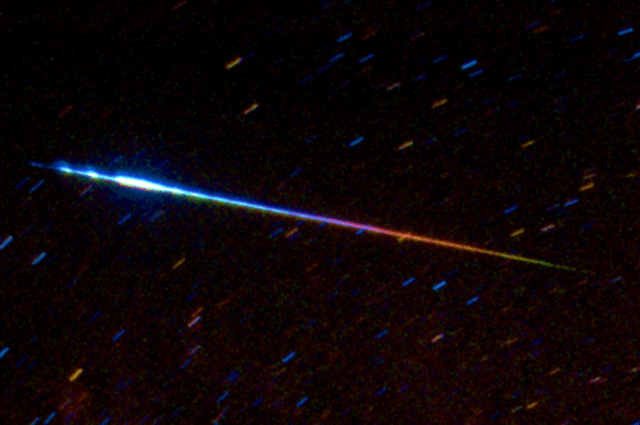Part of the charm of spotting a shooting star as it streaks across the sky is the rarity of the entire affair. However, if this astronomically minded startup is successful, setting up a private meteor shower for a special event might just be a reality—if you’re able to splash out for it.
The fledgling firm, called ALE, is headed by astronomy PhD Lena Okajima and is part of a collaboration among engineers and scientists from several universities in Tokyo.
The concept behind the “meteors on demand” model is this: ALE is developing a small (about 20 inches, or 50 cm, in diameter) satellite, which is to be launched into orbit around 400 to 500 kilometers above the earth. From this position, the satellite will be able to eject dozens of inch-wide pellets in a precise trajectory, allowing them to light up the skies over a specific location. The pellets are meant to burn up as they make their way through the atmosphere—in a variety of colors, thanks to a formula that ALE is keeping mum about, according to Wired UK. Tests conducted so far indicate that the fiery pellets will be visible, even in such highly light-polluted skies as those over Tokyo. And, in case of bad weather, the meteor seeding can be called off 100 minutes in advance.
In addition for being a pretty flash way to celebrate a special occasion (“Hey honey, you’re not going to believe what I got you to celebrate our anniversary…”) or launch your budding career as a prophet going (“Heed my words: there will be a bright tumult in the skies on the night of August 23…”), the shooting stars can be used for atmospheric and astronomic research.
The pellets are designed to burn up at approximately 60 km above the Earth’s surface—an area that is too high up for balloons, but too low for spacecraft. As quoted in Phys.org, Hironori Sahara—member of the ALE project and associate professor at Tokyo Metropolitan University’s aerospace engineering department—says that being able to know exactly when and where these artificial meteors are going to show up will allow researchers to train their instruments on the skies above those locationss, and therefore better understand “the temperatures and densities of the atmosphere and its movements, and could [reveal] clues on how the environment will change over the medium and longer term.”
Now, if this is sounding a bit too good—or weird—to be true, there is this to consider: each pellet has a price tag of ¥1,000,000 (or about $8,000) a pop, and the project is still in the design phase.
So…here’s hoping the whole thing gets off the ground.
Image: NASA









